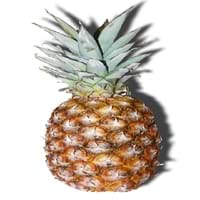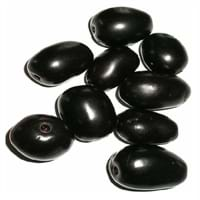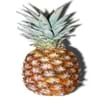Health Benefits
Asthma treatment, Bronchitis treatment, Cancer prevention, Heart care, Increases metabolic rate
Cancer prevention, Heart care, Increase in haemoglobin, Regulates Blood Sugar, Ulcer prevention
General Benefits
Anti-inflammatory properties, Controls blood pressure, Digestive aid, Eye care, Healing of wounds, Maintains healthy cholesterol level, Strengthens bones, Treatment of sinusitis, Treatment of common cold
Boosts immune system, Digestive aid, Fights against infections, Strengthens bones
Skin Benefits
Anti-aging benefits, Brightens and lightens complexion, Skin cleansing, Treatment of acne, Treatment of dark spots
Brightens and lightens complexion, Skin cleansing, Skin rejuvenation, Treatment of acne, Treatment of dark spots
Hair Benefits
Prevents hair loss
Promotes longer and healthier hair, Protects hair
Allergy Symptoms
Abdominal pains, Itching in tongue and other parts of mouth, Sneezing, Swelling, Tingling sensation in wrist and face, Vomiting, Wheezing
Abdominal pains, NA
Side Effects
Causes swollen mouth, Allergic reaction, Diarrhoea, Nausea, Skin rash, Vomiting
Decrease in blood sugar levels, Allergic reaction, Throat irritation, Throat swelling, Possibly unsafe during pregnancy
Best Time to Eat
Best if taken as a breakfast (or empty stomach), As a snack in the late afternoon, Eat the fresh ones, avoid mixing with any other foods, don't eat after meal., Morning time (before lunch)
As a snack in the late afternoon, Don't consume at night and before bed, Eat the fresh ones, avoid mixing with any other foods, don't eat after meal., Morning time (before lunch), Strictly avoid empty stomach
Vitamin B5 (Pantothenic Acid)
Not Available
Vitamin B9 (Folic acid)
Not Available
Vitamin C (Ascorbic Acid)
Vitamin E (Tocopherole)
Not Available
Vitamin K (Phyllochinone)
Not Available
Lutein+Zeaxanthin
Not Available
Calories in Fresh Fruit with Peel
Not Available
Calories in Fresh Fruit without Peel
Not Available
Calories in Frozen Form
Not Available
Calories in Dried Form
Not Available
Calories in Canned Form
Not Available
Type
Berry, Tropical
Tree fruit, Tropical
Season
Autumn
Monsoon, Summer
Varieties
Smooth Cayenne, Abacaxi, Red Spanish and Queen
Ram Jarnun and Paras
Color
Yellow
Black, Magenta, Purple
Inside Color
Yellow
Purple
Taste
Strong, Sweet, Tart
Astringent, Sweet
Origin
Central America, South America
Bangladesh, India, Indonesia, Malaysia, Nepal, Pakistan, Philippines, Sri Lanka
Grows on
Not Available
Trees
Soil Type
Clay, Sandy loam, Well-drained
Loam, Sandy loam, Well-drained
Climatic Conditions
Hot, Sunny
Humid, Rainfall
Facts about
- A single pineapple takes 3 years to reach maturation.
- Pineapple is not an apple, but is actually a berry.
- The name is with reference to its resemblance to pine cones.
- Pineapple is sweeter if scales are more.
- Wood of jambul tree is water-resistant wood & is used in railroads and to implement engines in the well.
- In Indian mythology, it is said that Jambul fruit was revered by Buddha.
- Jambul has a huge importance in Ayurveda.
Top Producer
Costa Rica
India
Other Countries
Brazil, India, Philippines, Thailand
Bangladesh, Indonesia, Malaysia, Nepal, Pakistan, Philippines, Sri Lanka
Top Importer
United States of America
Not Available
Top Exporter
Costa Rica
India
Botanical Name
Ananas comosus
Syzygium cumini
Synonym
Ananas sativus
Eugenia cumini
Subkingdom
Tracheobionta
Tracheobionta
Division
Magnoliophyta
Magnoliophyta
Class
Liliopsida
Magnoliopsida
Subclass
Commelinidae
Rosidae
Family
Bromeliaceae
Myrtaceae
Species
A. comosus
S. cumini
Generic Group
Pineapple
Not Available
Difference Between Pineapple and Jambul
We might think that Pineapple and Jambul are similar with respect to nutritional value and health benefits. But the nutrient content of both fruits is different. Pineapple and Jambul Facts such as their taste, shape, color, and size are also distinct. The difference between Pineapple and Jambul is explained here.
The amount of calories in 100 gm of fresh Pineapple and Jambul with peel is Not Available and 60.00 kcal and the amount of calories without peel is 50.00 kcal and Not Available respectively. Thus, Pineapple and Jambul belong to Low Calorie Fruits and Low Calorie Fruits category.These fruits might or might not differ with respect to their scientific classification. The order of Pineapple and Jambul is Poales and Myrtales respectively. Pineapple belongs to Bromeliaceae family and Jambul belongs to Myrtaceae family. Pineapple belongs to Ananas genus of A. comosus species and Jambul belongs to Syzygium genus of S. cumini species. Beings plants, both fruits belong to Plantae Kingdom.









